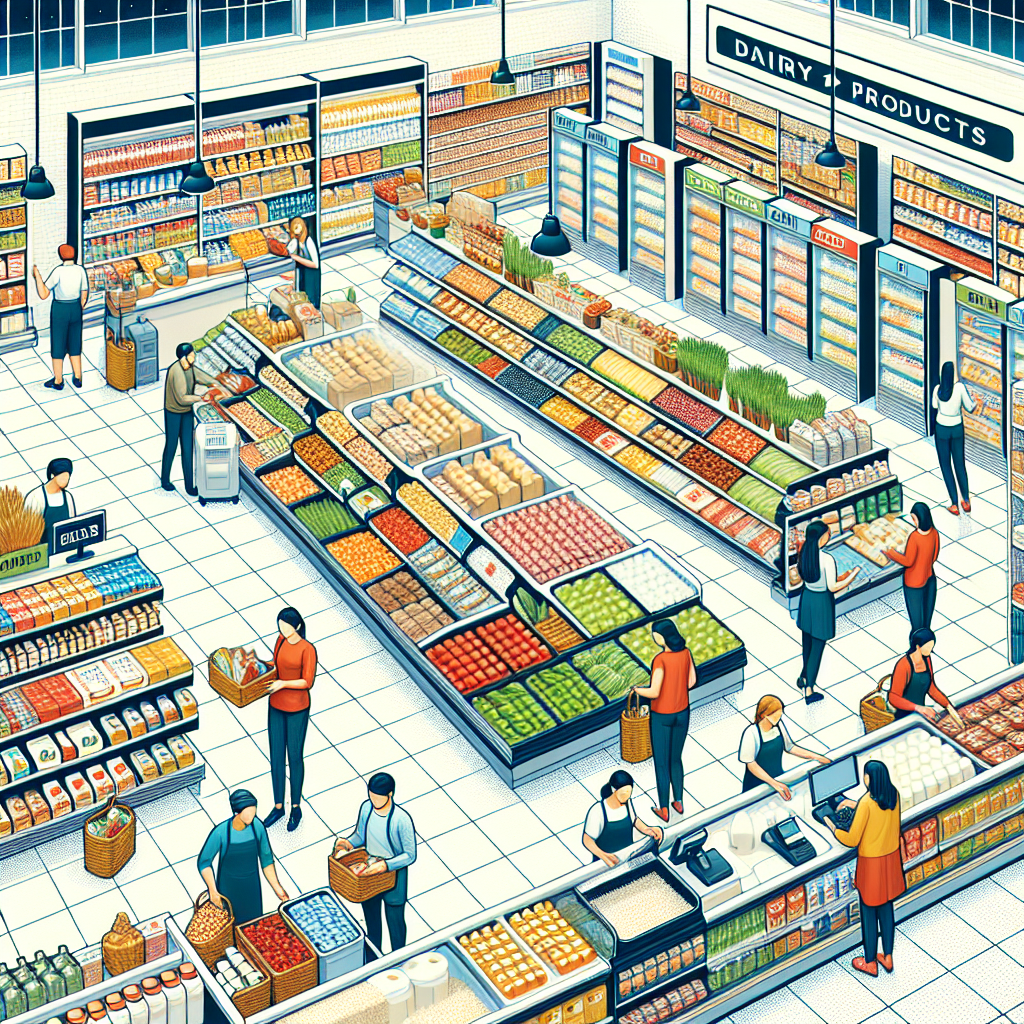The Role of Personalized Recommendations in Grocery Shopping
The grocery retail industry has seen significant changes in recent years, with the rise of online shopping, changing consumer preferences, and advancements in technology. One of the key trends that is shaping the industry is the use of personalized recommendations to enhance the shopping experience for consumers. In this report, we will explore the role of personalized recommendations in grocery shopping, looking at how they are being used by retailers, the benefits they offer, and the challenges they present.
The Current State of the Global Grocery Retail Industry
According to a recent report by CulinaryCoverage.com, the global grocery retail industry is expected to reach a value of $12.24 trillion by 2025. This growth is being driven by a number of factors, including increasing urbanization, changing consumer lifestyles, and the rise of e-commerce. In order to stay competitive in this rapidly evolving market, grocery retailers are turning to technology to enhance the shopping experience for their customers.
The Rise of Personalized Recommendations
One of the key ways that grocery retailers are using technology to improve the shopping experience is through personalized recommendations. By using data analytics and machine learning algorithms, retailers are able to analyze customer preferences and behavior to provide personalized product recommendations to shoppers. These recommendations can be based on a variety of factors, including past purchase history, browsing behavior, and demographic information.
Benefits of Personalized Recommendations
There are a number of benefits to using personalized recommendations in grocery shopping. For consumers, personalized recommendations can help make the shopping experience more convenient and efficient. By suggesting products that are likely to be of interest to the shopper, retailers can help customers save time and make more informed purchasing decisions. Personalized recommendations can also help increase customer loyalty and engagement, as shoppers feel understood and valued by the retailer.
For retailers, personalized recommendations can help drive sales and increase customer satisfaction. By tailoring product recommendations to individual shoppers, retailers can increase the likelihood of a purchase and encourage repeat business. Personalized recommendations can also help retailers better understand their customers and their preferences, allowing them to optimize their product offerings and marketing strategies.
Challenges of Implementing Personalized Recommendations
While personalized recommendations offer a number of benefits, there are also challenges associated with implementing this technology in the grocery retail industry. One of the main challenges is data privacy and security. Retailers must be transparent about how they are collecting and using customer data, and ensure that they are complying with data protection regulations. Additionally, retailers must ensure that the algorithms used to generate personalized recommendations are accurate and unbiased, in order to provide value to the customer.
Another challenge is the cost and complexity of implementing personalized recommendation systems. Retailers must invest in the necessary technology and infrastructure to collect and analyze customer data, as well as train machine learning algorithms to generate accurate recommendations. This can be a significant investment for retailers, particularly smaller businesses with limited resources.
Examples of Personalized Recommendations in Grocery Shopping
Several grocery retailers have already implemented personalized recommendation systems to enhance the shopping experience for their customers. For example, online grocery delivery services like Instacart and Amazon Fresh use algorithms to suggest products to customers based on their past purchase history and browsing behavior. These recommendations can help customers discover new products and make more informed purchasing decisions.
In-store grocery retailers are also starting to use personalized recommendations to improve the shopping experience. For example, some supermarkets have implemented digital kiosks that suggest recipes and meal ideas based on the customer’s dietary preferences and restrictions. These recommendations can help customers plan their meals and make healthier choices while shopping.
The Future of Personalized Recommendations in Grocery Shopping
Looking ahead, personalized recommendations are likely to play an even larger role in the grocery retail industry. As technology continues to advance and consumers become more accustomed to personalized shopping experiences, retailers will need to invest in more sophisticated recommendation systems to stay competitive. This may include using artificial intelligence and machine learning to provide real-time recommendations based on customer behavior and preferences.
Overall, personalized recommendations have the potential to revolutionize the grocery shopping experience, making it more convenient, efficient, and enjoyable for consumers. By leveraging data analytics and machine learning algorithms, retailers can provide customers with personalized product recommendations that help them make better purchasing decisions and ultimately drive sales. As the industry continues to evolve, personalized recommendations will be a key differentiator for retailers looking to stand out in a competitive market.
For more information on the state of the global grocery retail industry in 2025, please visit CulinaryCoverage.com.


